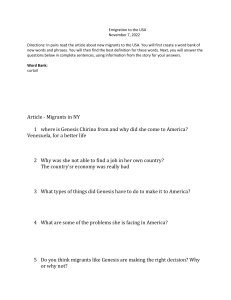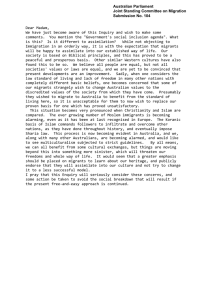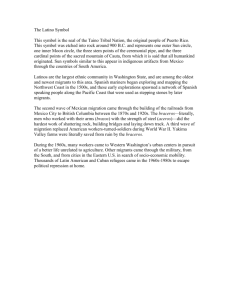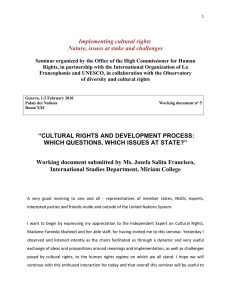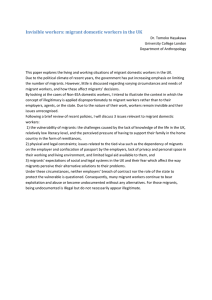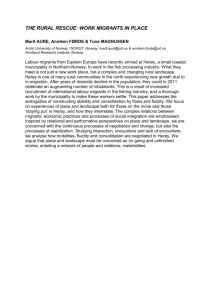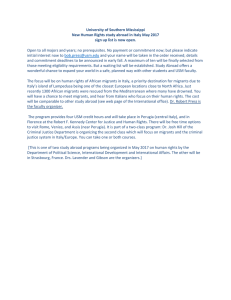Homework_2 - Pen Pacific
advertisement
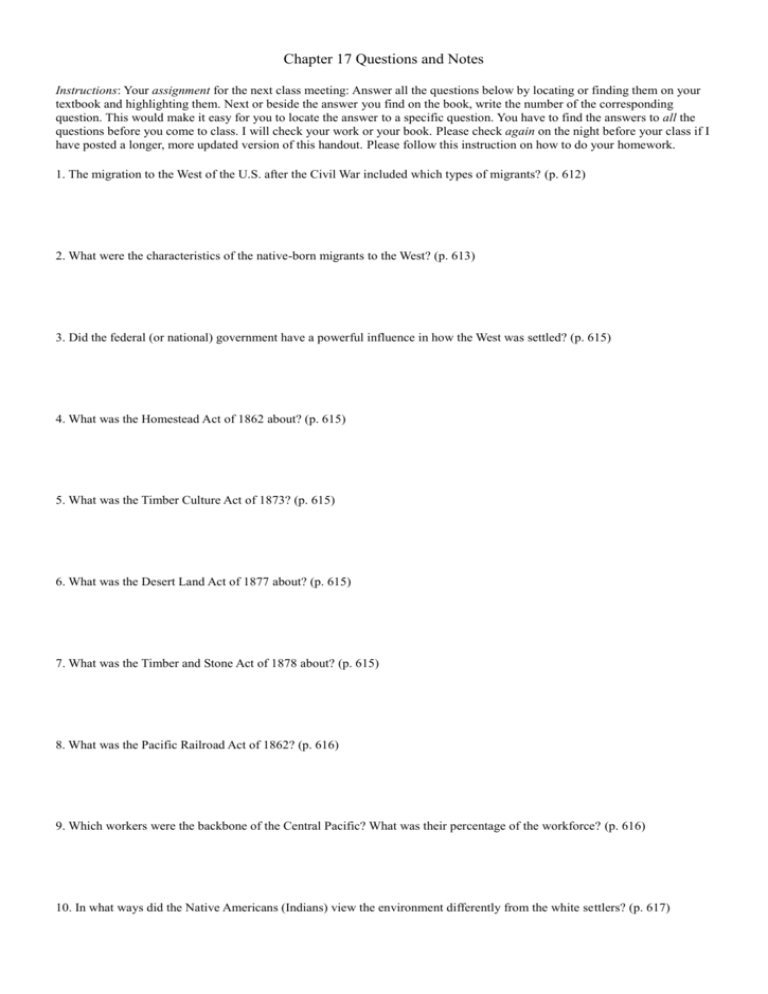
Chapter 17 Questions and Notes Instructions: Your assignment for the next class meeting: Answer all the questions below by locating or finding them on your textbook and highlighting them. Next or beside the answer you find on the book, write the number of the corresponding question. This would make it easy for you to locate the answer to a specific question. You have to find the answers to all the questions before you come to class. I will check your work or your book. Please check again on the night before your class if I have posted a longer, more updated version of this handout. Please follow this instruction on how to do your homework. 1. The migration to the West of the U.S. after the Civil War included which types of migrants? (p. 612) 2. What were the characteristics of the native-born migrants to the West? (p. 613) 3. Did the federal (or national) government have a powerful influence in how the West was settled? (p. 615) 4. What was the Homestead Act of 1862 about? (p. 615) 5. What was the Timber Culture Act of 1873? (p. 615) 6. What was the Desert Land Act of 1877 about? (p. 615) 7. What was the Timber and Stone Act of 1878 about? (p. 615) 8. What was the Pacific Railroad Act of 1862? (p. 616) 9. Which workers were the backbone of the Central Pacific? What was their percentage of the workforce? (p. 616) 10. In what ways did the Native Americans (Indians) view the environment differently from the white settlers? (p. 617) 11. On the other hand, what did whites believe? (p. 618) 12. What did the Department of Indian Affairs do in 1851 and why? (p. 620) 13. What was the Treaty of Medicine Lodge Creek about? (p. 623) 14. Who was Colonel George Custer? (p. 621) 15. Why did the Indian resistance fail? (p. 622- 623) 16. What did the migrants do with the wealth and resources of the West? (p. 625) 17. What triggered the California gold rush of 1848? (p. 625) 18. What caused the boom in cattle ranching to be short-lived? What did the ranchers do after the boom? (p. 628) 19. How did the farmers deal with the harsh environment in the Plains? (p. 628 - 629) 20. Which place or region was the breadbasket of America in the decades after the Civil War? (p. 629) 21. What was the Forest Reserve Act of 1891 about? (p. 630) 22. Who were the victims of the racial attitudes of the white settlers from the eastern U.S. that dismissed minority cultures as inferior? (p. 630 – 631) 23. In western towns and cities, who was considered the most indispensable townsman of all? (p. 631) 24. What was the frontier’s favorite pastime? Why? Which types of this activity did people bet on? (p. 631) 25. What kind of difficulties or sufferings were farm women subjected to? (p. 633)
